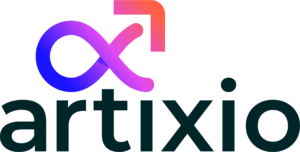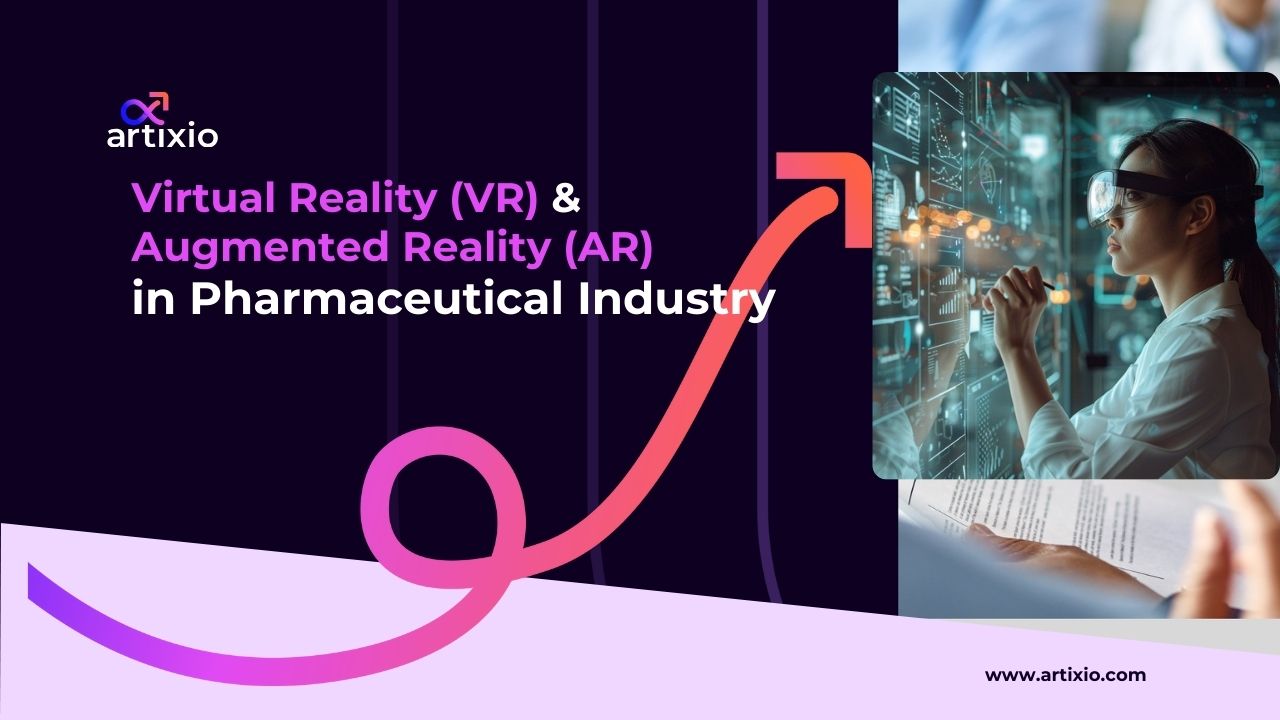Virtual Reality (VR) is a virtual world with an immersive environment, which replaces the user surrounding view by using a headset. Augmented Reality (AR) is a real-world augmented experience, or it can be also defined as the mixing of digital images with real ones. The devices that use AR are smartphones, tablets, AR glasses, etc. The AR is also referred to sometimes as mixed or merged reality.
AI-powered technologies like Virtual Reality (VR) and Augmented Reality (AR) are starting to change how pharma companies and healthcare providers work. Together, these tools—often called Mixed Reality (MR)—are making it easier to visualize complex medical procedures and drug behavior. For doctors, MR can help simulate surgeries or show how a drug moves through the body. On the pharma side, it’s being used to test things like how well a drug is absorbed, how stable it is, or whether it interacts safely with other ingredients—without waiting for real-world trials.
This blog aims to deliver in-depth content about VR and MR in the pharmaceutical Industry.
Virtual Reality (VR) and Augmented Reality (AR) in Pharma
VR has proved innovative and modernized applications in the healthcare and pharma industry. Some of its benefits involve simulated models for drug kinetics, production of innovative medicines, etc.
AR with its innovative technology has proved a boon in the pharmaceutical industry. Its technology of mingling the real world with the digital world has led to the emergence of many digital tools which help in the manufacturing, safety measures, quality control, etc. of pharmaceuticals.
Applications Of VR And AR In Pharmaceutical Industry:
Following are the applications of VR and AR in the pharmaceutical Industry:
Pharmaceutical Manufacturing Training:
- VR Application: Virtual labs help trainees in Pharmaceutical Manufacturing to learn the manufacturing procedures and techniques without the use of physical tools. This is useful for learning new procedures or manufacturing risky procedures. This helps the new trainees to get exposed to the environment without any risks.
- AR Application: The AR helps the pharmaceutical manufacturing trainees to understand and learn about the operation and working of the instruments by overlaying their working tutorial directly on the equipment.
Regulatory Training:
- VR Application: The simulation models of VR help to provide hands-on training on how to handle regulatory situations to achieve regulatory compliance. This helps the trainee to learn about adverse effects, GMP compliance, etc.
- AR Application: AR helps the trainees by providing real-time augmented data for various documentation and regulatory procedures. This ensures timely compliance and error free process.
Clinical Trial Training:
- VR Application: VR is used to stimulate the clinical trial processes, which helps the clinical trial trainees to understand the methodology. This simulation tool gives exposure to patient data handling, protocol adherence, etc.
- AR Application: AR tools help the trainees to understand complex regulatory protocol by overlaying the relevant information of the documents.
Drug Information:
- VR Application: VR helps to understand the working of drug in the human body. By creating 3D models, it helps understand the effect of drug on various body organs.
- AR Application: The AR technology develops overlapping visuals for instructions and information regarding the drug dosage, drug mechanism, side effects, etc. This makes it very convenient for the patients as well as the healthcare professionals to access the essential drug related information easily.
Pharmaceutical Manufacturing:
- VR Application: The simulation models provide an overview of the manufacturing process. This overview helps the manufacturer to avoid the steps that may prolong the process or result in a faulty product. This also helps the staff to get well trained in the handling of equipment, clean room procedures, and critical protocols.
- AR Application: AR guides in equipment assembling, quality check, safety alerts and also helps by providing instructions for the working of machinery and workstations.
Drug Discovery:
- VR Application: VR helps scientists explore the molecular structure, chemical entity, chemical and physical properties of the drug.
- AR Application: AR helps visualize drug data and experimental results by overlaying molecular information on lab devices.
Product Research:
- VR Application: VR helps researchers predict the response of new products in a patient- stimulated environment.
- AR Application: AR overlays testing protocols, expected analysis results on laboratory equipment and documents in real time.
Advantages Of VR And AR In Pharma:
Following is some of the advantages of VR and AR in pharmaceutical industry:
- Increases the safety level in development, production, as well as monitoring.
- These models help to train a large number of trainees at a time.
- The simulation models help to provide efficient and depth-oriented training with hands-on training using simulators in real-time.
- The access to information by using AR tools helps to get in depth knowledge of all the aspects regarding documentation, compliance, equipment, etc. easily all at one place.
Challenges Encountered During Implementation Of VR and AR:
Some of the challenges encountered while implementing AR and VR are as follows:
- The initial cost of developing VR/AR is expensive.
- The implementation of VR/AR requires installation of software.
- The users need to be trained on how to use AR/VR tools.
- There is a requirement for digital gadgets such as digital glasses, tablets, etc.
Examples Of Industries Utilizing VR and AR:
Following is the list of some industries, which utilized VR and AR:
Pfizer:
- AR for Sales and Marketing: Using AR, Pfizer has helped healthcare professionals to visualize effects of Pfizer products on its patient’s human body.
- VR for Training: Using VR, Pfizer has trained its staff regarding compliance and product knowledge.
Novartis:
- VR in Surgical Training: Collaborating with VR companies, Novartis has developed virtual training programs helping surgeons to be exposed to hands-on training through virtual models.
- AR for Drug Mechanism Visualization: Novartis has implemented AR to assist healthcare professional as well patients to understand the mechanism of drugs in human body.
Johnson & Johnson:
- VR for Professional Training: Johnson & Johnson’s have incorporated VR into its training programs.
- AR for Consumer Education: Using AR Johnson & Johnson has provided consumer education reagarding benefits and use of over-the counter medications.
Merk & Co:
- VR for Research and Development: Merk & Co has developed VR into its R&D department, especially for drug discovery and development.
- AR for Healthcare Education: Using AR, Merk has developed educational tools for healthcare providers to help visualize mechanism of new drugs and impact of diseases on human body.
GlaxoSmithKline (GSK):
- VR for Employee Training: GSK has implemented VR in its training program for their employees in drug manufacturing.
- AR in Patient Engagement: GSK has created interactive brochures and educational tools using AR. This has improved patient adherence.
Conclusion:
The emergence of VR and AR has led to tremendous expansion in the healthcare and pharmaceutical industries. This has led to existence of many AR and VR tools that helps predict the response of drug, mechanism of drug, lab and research protocols, etc. In real time. Indeed, this has revolutionized the pharmaceutical healthcare system.
So, if you’re looking for a partner to revolutionize your pharmaceutical products with VR and AR, contact today at info@artixio.com
FAQs:
Are VR and AR safe to use in a regulated environment?
Yes, VR and AR are safe to use in regulated environments. These VR and AR models can be trained to work in a GMP compliant environment, following all regulations.
How can companies access digital tools based on VR and AR?
The pharmaceutical companies can partner with digital technology providers that provide digital tools customized according to the company’s requirements.
Does Mixed Reality (MR) differ from VR and AR?
Not exactly, but MR is the combination of VR and AR that is real world combination with digital tools.
What are the gadgets required to use AR and VR technology?
Gadgets such as Oculus Rift headsets, HTC Vive, and software are required for VR, while for AR gadgets such as smartphones, tablets, smart glasses are required.

